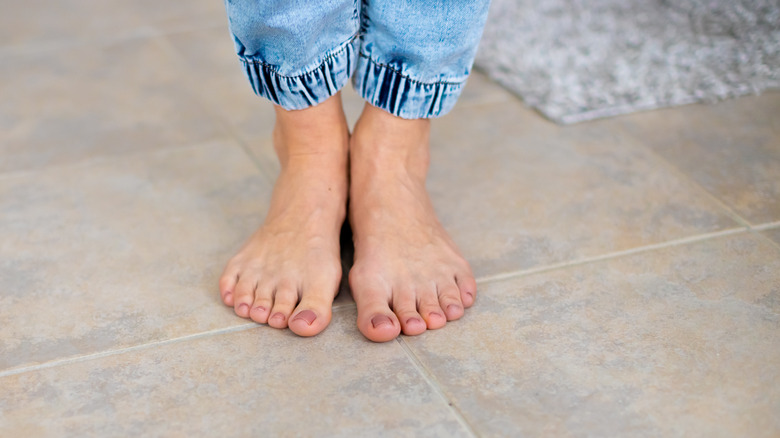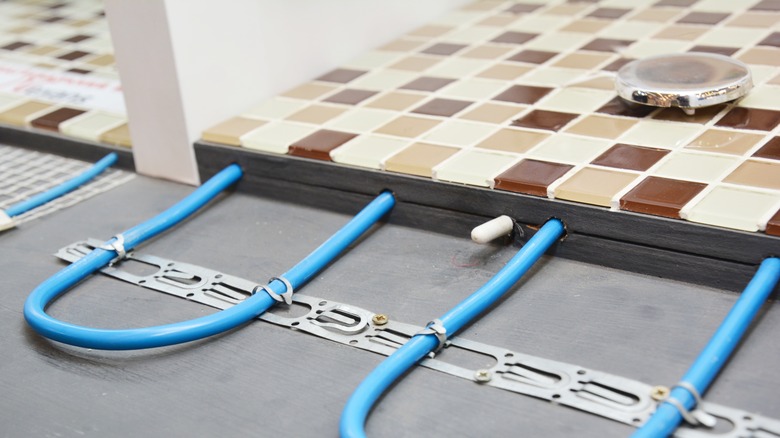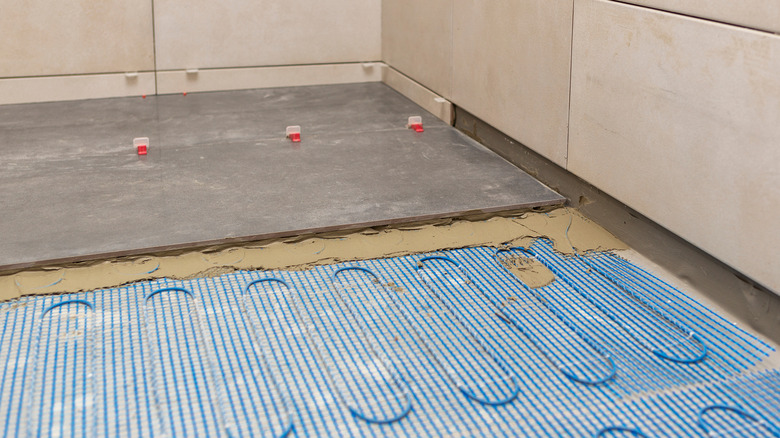The Flooring Type That Works The Best With Radiant Heating
As you plan the flooring remodel for your home, the benefit of radiant heating is alluring, but what you put on top of it matters, too. The best flooring type for radiant heating could be either porcelain or ceramic tile, as well as natural stone. These are available in dozens of colors and styles to match just about any aesthetic. What makes them fantastic for these heated floors is that they don't degrade and can conduct the heat with ease, allowing the heating components to do their job quickly and, in some situations, with less expended energy.
Radiant heating utilizes hydronic or electrical heating elements placed under the tile flooring to use thermal radiation and electromagnetic waves to warm the tile and ultimately conduct warmth for the entire space. Radiant heating for bathroom floors, for example, minimizes the risk of that cold first step in the morning and could add value to a home. With costs ranging widely from $6 to $20 per square foot, the radiant heating cost is significant for any larger area.
Ceramic and porcelain tiles are a common option, but you could also use just about any natural stone tile as well. While the installation process is slightly different for natural stone since it has a higher conductivity level, either option, when properly installed, can add exceptional warmth to your space. Consider both of these options as you consider flooring for any room of your home.
Why choose ceramic and porcelain tile for your radiant floor heating
Radiant floor heating can work with a variety of floor options, including wood, laminate, and vinyl. If done right, you could even place carpeting or rubber-type flooring over the top. Natural stone works the best for several reasons. However, ceramic and porcelain tiles are a popular choice to consider.
Both porcelain and ceramic tiles heat up quickly, allowing for the transfer of that warmth into the room easily. Both materials are highly conductive, which not only means warming up fast, but also holding onto that heat longer, creating a comfortable space. Tile thickness, which can vary between manufacturers, will impact heating tile (with thicker tiles, it takes longer to heat up). For aesthetic reasons, note that ceramic tile typically has a color or design applied to the surface of the tile. But porcelain will have absorbed more of the color and texture of the materials being used. This can create a difference in the overall look but typically doesn't impede the functionality of heat conductivity.
When choosing between the two, note that ceramic tends to absorb more moisture and tends to be less expensive to install. Porcelain is a harder surface and more expensive but absorbs less moisture. You can use both types with underflooring electric or water radiant heating methods. Both could lower your home's energy consumption overall compared to duct-based heating systems. A component of that savings is dependent on the type of radiant floor heating system and its efficiency rating.
How to choose natural stone tile for your radiant floor heating
As you consider the options in ceramic and porcelain tile for your home, don't overlook the value of natural stone tiles, which are often just as good of choice, though they tend to cost a bit more. Natural stone tile has some variances in functionality depending on the specific type of stone.
It's also installed a bit differently since it tends to have a thicker mortar bed under it, which makes a difference in the conductivity of the stone. Still, natural stone tends to have a higher thermal conductivity level, making it an excellent choice for warming up cold spaces. Stone doesn't expand or contract when exposed to heat but does encourage the heat to pass through the tile into the room, using either an electric or hydronic system.
Most natural stone can be used in these applications, with granite being the ideal choice due to its durability and higher heat conductivity level. Marble is less ideal since it absorbs more water. Slate and limestone can work as well, but keep in mind that these products may be at a higher risk of stains. And they are best used in areas that are drier rather than kitchens and bathrooms. Travertine is another excellent choice and is often better suited for wetter areas. It's worth noting that when it's not properly placed by an experienced radiant flooring and tile expert, natural stone can break and be highly expensive to repair.


